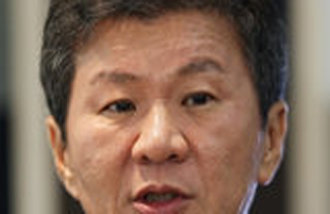[Editorial] Is New Plan for Seoul Metropolitan Area a Damage-Control Scam?
[Editorial] Is New Plan for Seoul Metropolitan Area a Damage-Control Scam?
Posted August. 31, 2004 22:04,
Plans to allow construction and expansion of high-tech production lines in the Seoul metropolitan area is somewhat inevitable to improving the competitive edge of the countrys economy and turning around the economic prospects. It is necessary to use the human resources pool and industrial infrastructure of the area as an engine to enliven the economy, which posts signs of a long-term downturn.
Since the information technology human resources are abundant in the area, it will attract tens of trillions of won in new investments once new factories are allowed to be built. The rigid regulations capping the number of factories in the area should not be used to stop international investment and accelerate industrial hollowing. It has been a long wish by industry to loosen conditions for construction permits for high-tech factories.
However, whats lurking behind the new Seoul metropolitan development initiative proposed by the Ministry of Construction and Transportation and the Presidential Commission for Balanced National Development is a stratagem to assuage public discontent in the area over capital relocation plans. It represents an attempt to spread belief that the metropolitan area will remain the center of the economy after the government moves to a new seat.
Nevertheless, we wonder how much a development plan based upon an uncertain policy like the capital relocation plan will be effective in easing public concerns. A development plan for the metropolitan area, which has to compete with Tokyo, Shanghai, Singapore, and Hong Kong, should not be driven by political damage control or political pork-barreling. The relocation of the government seat wont be completed by the current government, which will be out of office after three and a half years. The insufficient level of national consensus on the plan makes the future of the plan improbable. The fact that this government will do groundbreaking work for the relocation wont necessarily guarantee the continuity of the plans. This is why a plan for the development of the metropolitan area should not be based on the change of the government seat.
If government plans are implemented, most public offices currently located in the metropolitan areas will move out soon. Out of 268 public offices in the metropolitan area, 29 government affiliates will move to a new executive capital, and about 180 to 200 organizations will be farmed through 11 new innovation cities nationwide. The geographical decentralization of public corporations and organizations is needed to curb the concentration of the population in the metropolitan area. However, any organizations serving to maintain the competitive edge of the area and the convenience of 20 million residents should remain in the area.







